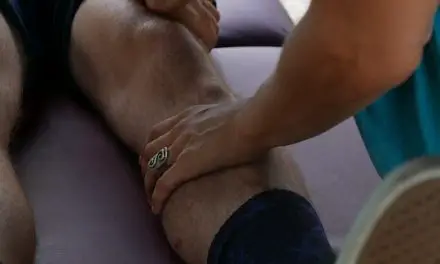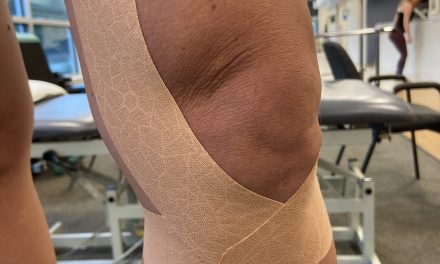In the last decade, many educational programs have updated their policies and curricula to be trauma-informed, but massage therapy lags behind, even though it’s one of the professions that could most benefit from a trauma-informed update.
Massage therapists are often sought after to reduce pain and anxiety, so a disproportionate number of trauma survivors become bodywork clients. Because touch can be foreign, threatening, reminding of past trauma, or reminiscent of the care received from a parent, massage therapy is inherently more likely to interact with trauma-relevant content than is the case in most professions.
Given the pervasiveness of trauma in the population and its relevance to bodywork, we become better-informed massage therapists by becoming a trauma-informed one. This article offers an introduction to what trauma and trauma-informed care is and examples of what to do or not to do in a massage therapy setting.
What is trauma?
More people know about trauma and its pervasiveness than ever before. This is evidenced by one of the many books about trauma, The Body Keeps the Score, has currently spent over a year on the New York Times Bestseller List.
The Substance Abuse and Mental Health Services (SAMHS) Administration defines trauma as follows:
Individual trauma results from an event, series of events, or set of circumstances that is experienced by an individual as physically or emotionally harmful or life threatening and that has lasting adverse effects on the individual’s functioning and mental, physical, social, emotional, or spiritual well-being.
Trauma shows up in a massage therapy setting in many ways. Sometimes it shows up as a strong reaction (e.g. panic attack) in response to a sound outside or in response to something the therapist says or does. Sometimes it shows up as a client that is “checked out” and unavailable.
Most of the time trauma shows up in more subtle ways, embedded in the client’s personality in every way possible, from wanting the therapist to fix them, to their postural and movement and pain patterns, to their way of relating to the therapist and themselves. The latter includes a higher incidence of both transference with the practitioner and/or shaming themselves.
Trauma-informed Care in Massage Therapy
The proliferation of trauma awareness has led to more options for trauma treatment from licensed mental-health professionals, and it has also led to the proliferation of trauma-informed services (which is not trauma treatment) from institutions and individuals.
According to SAMHS, “a program, organization, or system that is trauma-informed:
- Realizes the widespread impact of trauma and understands potential paths for recovery
- Recognizes the signs and symptoms of trauma in clients, families, staff, and others involved with the system;
- Responds by fully integrating knowledge about trauma into policies, procedures, and practices, and seeks to actively
- Resist re-traumatization.”
To adapt these 4 Rs from SAMHS above for trauma-informed bodywork the massage therapist should:
- Realize (in terms of neurobiology, psychology, and attachment theory) how a client’s behavior, responses, and preferences represent an adaptation to traumatic experiences, and that healing happens in relationships, so providing a safe and positive therapeutic alliance or collaboration with the client is highly valuable.
- Recognize and respond effectively to trauma-driven responses when they arise in clients.
- Resist re-traumatization by setting up and maintaining both the physical environment and the relational context in a way that maximizes the client’s sense of safety, and by ensuring that the bodywork session is client-centered, with clients explicitly empowered to determine the goals of the session, avoiding any suggestion that the client is broken or needs fixed.
As massage therapists, so much of what we do isn’t really about “manipulating soft tissue.” It’s about changing the nervous system via touch and relational (“soft”) skills, which are both equally capable of conveying care or re-traumatizing. Being a caring human being that facilitates the client’s sense of safety is essential for creating an effective session, and part of building safety is seeing the client as a whole person and conveying acceptance of who they are.
For instance, if a client expresses emotions during a session, we can reassure them simply, with words or our mere presence, that their experience is okay and doesn’t need to be different.
Oftentimes, the best and most ethical course of action for a massage therapist to take is to simply stay with whatever is happening in the client’s present moment experience. Being with the client in this way, letting go of any agendas and minimizing the impact of countertransference, involves special skills that don’t come easy coming from a culture where asking for more details, giving advice, relating our own story, and soothing the speaker are all normal.
A former student, Lauren Kenny, in my massage therapy program put it this way:
Being [a] trauma-informed [bodyworker] is like learning a new language. It’s listening, but not just listening in the auditory sense… it’s learning to hear through visual experience, the ability to read facial cues, body movements, and tiny shifts. The ability to sense another’s state, or to listen through touch. To hear the words that are being spoken, and to also detect the words that are not being said. It’s possessing these skills and moving forward with loving awareness to allow someone to feel safe, heard, and met.
Sources of trauma
When most people think of trauma, they think of shock trauma, which may occur after a single event, such as a car accident or an act of violence. Survivors of shock trauma are sometimes diagnosed with PTSD—post-traumatic stress disorder. If the traumatic events unfolded over a period of time as an adult, such as prolonged domestic violence, this is called complex trauma, which may lead to a diagnosis of CPTSD.
The Autonomic Nervous System
To better understand the underpinnings of PTSD, it is essential to be familiar with the autonomic nervous system (ANS), which controls the visceral organs and the smooth muscles around blood vessels and airways. The ANS has two divisions, neither of which is under conscious control. The first division is the sympathetic (“fight or flight”) system, which increases heart and breathing rate, dilates pupils, and redistributes the blood from the skin and digestive system to the muscles. The second division is the parasympathetic (“relaxation”) system, which has the opposite effects on the heart, lungs, pupils, and blood supply distribution.
Polyvagal theory
Dr. Stephen Porges offers a clinical model of the ANS called polyvagal theory, in which he proposes that the ANS is composed of three functional divisions rather than two: the ventral vagal complex (VVC), the sympathetic-adrenal system, and the dorsal vagal complex (DVC). While the anatomical accuracy of his model is debated, he suggests that it’s useful to work with trauma with the idea in mind that these three divisions are called upon in a hierarchical fashion.
The VVC, which is the newest evolutionarily, is involved in a “calm and connect” or “tend and befriend” response, which is what most people typically equate with the parasympathetic “relaxation” response. This system is involved in functioning that is related to seeking social support.
If using the VVC seems unlikely to be effective (e.g. there is no one around that one can rely on), then the ANS shifts to the sympathetic-adrenal system, which will prepare the body physiologically for fighting or fleeing by raising the heart rate and mobilizing resources for the muscles.
If fighting or fleeing isn’t a viable option, then DVC, which is the oldest evolutionarily, takes over by creating a freeze response, which is characterized by flat facial expressions and vocal tone, a blank gaze, a rigid body position, a lack of verbal responsiveness, rotating from the spine rather than the neck, and a “floaty” sense of disconnection from one’s body (dissociation) that is often mistook as being a “spiritual state.” Freeze states are quite common and often go unnoticed in contexts associated with peace and calm (e.g. meditation classes, yoga classes, and bodywork sessions).
Session implications in massage therapy
Trauma-informed massage therapy requires the ability to respond to PTSD symptoms if they arise by providing a sort of “Autonomic First Aid.” This requires the ability to recognize if the client is having an ANS response and to “get them back in the room.” For instance, if a client is having an intolerable sympathetic response (i.e. “panic attack”), one could direct the client to:
- engage in slow, deep breathing.
- focus attention on external objects, not internal feelings.
- focus on a “resource,” which can be any immediate pleasant experience or memory.
A freeze response is more difficult to recognize, especially if the client is lying prone. Freeze is often confused with calmness, but it’s important to distinguish the two since they are radically different. If a client is having a freeze response, we can direct the client to:
- attend to specific details in the room.
- engage in humming.
- touch the boundaries of their own body with their hands.
Developmental Trauma
While most people associate trauma with shock trauma, by far the most common form of trauma is developmental trauma (DT). DT refers to trauma that occurs during childhood in response to abuse and neglect, and it results in disruption of the attachment relationship with one’s primary caregiver. Developmental Trauma Disorder (DTD) has been proposed as the parallel diagnosis to PTSD, but until it’s officially recognized, many people who would qualify with a DTD diagnosis are diagnosed with various combinations of PTSD, CPTSD, depression, bipolar disorder, anxiety disorder, and others instead.
While PTSD is characterized by relatively simple ANS responses, DT affects the development of complex psychological functions related to personality, including most counter/transference phenomenon. Comprehending how a person responds to developmental trauma begins with an understanding of attachment theory, which cannot be adequately described here other than to say that a child will foreclose its own desires and impulses in order to preserve the attachment bond with the primary caregiver upon whom she or he depends for survival. This is the basis for why many attempts to change habits are thwarted or sabotaged and why cheerleading people to achieve their stated goals is often met with resistance.
Adverse Childhood Experiences (ACE)
In the late 1990s, researchers in California were following the progress of thousands of patients with obesity. They noticed that a very large percentage of patients who had lost significant weight regained most of their weight immediately before meeting their target goal. Why would so many people share this same pattern of sabotaging their progress when so close to attaining their goal?
Exploring this question resulted in the surprising discovery that individuals who experienced several types of childhood traumas had a significantly elevated risk for numerous medical conditions later in life, including cancer, diabetes, depression, PTSD, addictions, and more. This finding brought childhood trauma into the realm of public health. Also, survivors of trauma during the earliest stages of development are also more prone than other trauma survivors to develop syndromes such as fibromyalgia, migraines, chronic fatigue syndrome, and irritable bowel syndrome.
Pain and deep tissue massage
Trauma survivors report having pain with greater intensity and frequency than everyone else. The reason for this is that the nervous system generates pain via a complex process that involves pre-judging the potential danger of any stimulus. For trauma survivors, their nervous systems have become hypervigilant, or sensitized, based on the reasonable assumption that the environment will continue to be unsafe.
For both shock and developmental trauma, sometimes the emotional pain is too unpleasant to tolerate, so the nervous system adapts by dissociating or numbing the emotional pain. Unfortunately, the nervous system can’t suppress feelings selectively, so by numbing the emotional pain, all other feelings are numbed, too. Like any other human, these clients desperately want to feel something, especially to feel “alive,”so they engage in extreme experiences that are loud enough to overcome the numbing (e.g. extreme sports, aggressive sex, self-injury, fits of rage).
Another extreme experience that’s sought after is that of receiving “super deep tissue” because feeling pain is at least feeling something! A trauma-informed massage therapist knows this and approaches requests for “going super deep” differently. Once we realize it’s not about “deep” and it’s not about “tissue,” we can offer other treatment options that more effectively foster the sense of aliveness that is being sought.
At the same time, we realize that for some clients with early developmental trauma, that feeling of aliveness is problematic and may induce a recoiling on the next day that involves pain, depression, or anxiety. We can inform our clients of this (and coordinate with their psychotherapist) so they don’t feel confused or defeated about what might otherwise seem like a random occurrence.
Helpful or hurtful?
Trauma-informed massage therapy also includes resisting re-traumatization. One critical way to do this is to respect not only the client’s verbal boundaries but also their somatic boundaries. If a client has a guarding pattern wherein a limb is resisting movement, as is often the case after sexual abuse, the therapist should proceed mindfully. To override this protective/guarding response can easily feel like another traumatic boundary violation at a somatic level to the client and thus should never be conducted without client consent and mindfulness.
In contrast, moving the limb in the direction that is being held may allow the nervous system to let go of this holding pattern, but this should be conducted with both the awareness that it may elicit the emotions lying beneath the guarding defense as well as the confidence that one effectively respond to whatever arises and maintain the client’s sense of safety.
We also want to resist re-traumatization by not reconstituting a parent and child dynamic, which can occur via various means, including the use of empathy where better options exist. To be clear, empathy is an essential capability to have. Certainly, any massage therapist that lacked the ability to feel what their client feels and imagine what it might be like for their client is likely to seem uncaring and thereby be ineffective. But too often in massage therapy settings there is an unconscious recreating of parent and child dynamics wherein the client assumes the child role of being helpless and dependent on the parent while the therapist assumes the parent role of taking care of the child.
This is not the dynamic we want to promote with any client, because healing requires stepping into one’s adult self, not one’s helpless child self. As stated earlier, this often shows up as the client wanting the therapist to fix them and/or as the therapist offering to fix the client. Instead we want to foster a therapeutic relationship that is adult-adult, and this is particularly true for trauma survivors who seem stuck or want us to indirectly affirm their shaming of themselves or blaming of others for their current condition.
For instance, if they come in for a session due to neck pain that they believe is caused by “poor posture,” affirming the “poor posture” narrative is not recommended. Instead, one might inquire about the meaningful activities that they’d reengage in if they weren’t experiencing pain. In this way, one builds a therapeutic alliance with a more adult aspect of the client than just empathizing and “kissing their owie” would.
“But too often in massage therapy settings there is an unconscious recreating of parent and child dynamics wherein the client assumes the child role of being helpless and dependent on the parent while the therapist assumes the parent role of taking care of the child.”
Massage therapists should develop a list of counselors and psychotherapists to refer out their clients for further support. Ideally one would select a therapist trained in an approach with trauma treatment in mind. One might expect this to be simple to do, but the reality is that most psychotherapists are not specifically trained in how to work with trauma.
Ideal options include psychotherapists that have been trained in EMDR, Internal Family Systems (IFS), Somatic ExperiencingTM (SE), which was developed by Peter Levine to address shock trauma, or the NeuroAffective Relational Model (NARM), which was developed by Laurence Heller to address developmental trauma. If one is unable to locate individuals with this training, it’s important to find a professional that isn’t simply empathizing or solely pursuing the expression of emotions.
Putting trauma-informed care in massage therapy practice
Given the pervasiveness of trauma in our society, a massage therapist is going to be more effective with more people if taking a trauma-informed approach. This means realizing what the different forms of trauma are and how they impact the lives of trauma survivors. It means being able to recognize signs of trauma and being skillful in responding effectively to them. It means resisting re-traumatization of trauma survivors. And while a trauma-informed approach is essential for working with trauma survivors, the whole-person approach and the skills associated with it are valuable to apply with all clients.
This writing is meant to introduce these trauma-related concepts and how they relate to the bodywork setting. Many of these concepts and skills are complex enough and important enough to warrant their own article and require additional training. For further study in these topics, readers may enjoy books by Bessel van der Kolk, Peter Levine, and Laurence Heller, as well as courses in Somatic Experiencing and the NeuroAffective Relational Model. While it is rare to find a bodywork training that integrates a trauma-informed approach with bodywork, hopefully bodywork institutions will soon catch up.

Mark Olson, PhD, LMT
Mark Olson, Ph.D., LMT is the director of thePacific Center for Awareness and Bodyworkin Kaua`i andAffinity Wellness Educationin Florida.
He has an M.A. in Education and a Ph.D. in Neuroscience, specializing in Cognitive and Behavioral Neuropsychology and Neuroanatomy from the University of Illinois where he studied memory, attention, and eye movements.
Mark’s courses offer advanced knowledge and skills in manual therapy, affective neuroscience, somatic psychology, trauma studies, and relational skills to support helping professionals in providing a more informed and compassionate level of care.





